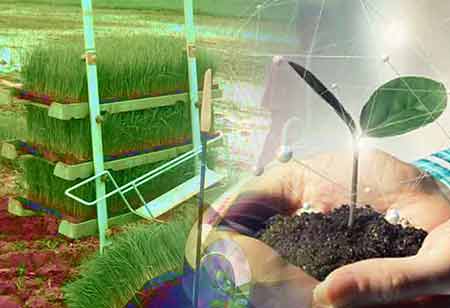Thank you for Subscribing to Agri Business Review Weekly Brief
Impact Of Geospatial Technology On Agriculture
Given the complicated multidisciplinary challenges, the agriculture sector faces, through intuitive mapping and analytics,

By
Agri Business Review | Tuesday, August 23, 2022
Stay ahead of the industry with exclusive feature stories on the top companies, expert insights and the latest news delivered straight to your inbox. Subscribe today.
The telecom industry uses innovative technologies like artificial intelligence to secure its network.
FREMONT, CA: The hour must adopt technologies that can offer better situational awareness and actionable intelligence and help the farming community with informed decisions. Therefore, there is a requirement for technologies that can aid in improving crop lifecycle from farm to fork, assist in optimizing the use of water for irrigation, minimize wastage of produce while providing oversight of the uncertainties and help farmers take the right action at the right time.
Geospatial technology and its applications
Given the complicated multidisciplinary challenges, the agriculture sector faces, through intuitive mapping and analytics, geospatial infrastructure offers unmatched capabilities for revealing deeper insight into relationships and patterns, answering complex questions, and supporting informed resolutions for fostering sustainable agriculture.
Furthermore, with the proliferation of location information, enhanced access to geospatial data, rapid data acquisition through UAVs and affordability, geospatial technologies demystify the complexities and aid in unlocking the value across the agricultural value chain.
Advanced GIS capabilities, including spatial modeling and predictive analysis using artificial intelligence, machine learning and analytics, provide enhanced location-specific location-specific intelligence to accurately forecast likely scenarios to mitigate, plan and respond.
Furthermore, with the high proliferation of the internet in rural India, mobile GIS tools play a vital role in democratizing geo-information and empowering farmers with small holdings with real-time information for informed decisions and risk mitigation.
Geospatial Value Impact
Performing a central role in bringing together data on land, water, irrigation, fertilizers, soils, geology, weather, crops, pesticides, supply chain, markets, and market conditions using a common visual language, geospatial technologies offer powerful tools to plan, design, monitor and manage activities across the crop life cycle.
By incorporating location intelligent IoT-based devices, and farm infrastructure, geo-enabled precision agriculture provides the transformative economic potential for sustainable climate-smart-agriculture, improving crop yields by 18-25%.
Furthermore, integrating location intelligent supply chain infrastructure with financing and farming activities on a GIS platform can strengthen the market linkages and reduce losses by 25-30%, in addition to significant fuel savings and carbon footprint reduction.
This caned with the economic value of geospatial technologies in supporting sustainable agricultural practices, including land restoration and natural resource management, which significantly impacts the agricultural economy. Therefore, a conservative estimate of the Geospatial Value Impact (GVI) on the agricultural sector is granted in the table below.
Being essential to the economy, the role of the agriculture sector is vital in achieving food security, increasing farmer income, and producing employment opportunities. Employing geospatial technologies for sustainable agriculture is a largely untapped opportunity to enhance productivity and realizations in the sector.
With the influence of climate change becoming tougher by the day, geo-enabled digital transformation is the need of the hour to combat the multifaceted challenges. Geospatial infrastructure also offers evidence-based insights backed with scientific rigor to strengthen governance and regulatory framework, which can quicken much-needed agricultural reforms in the country.





